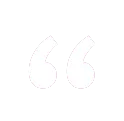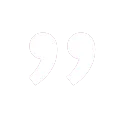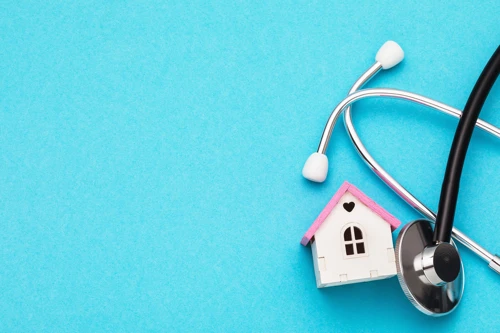Remote Patient Monitoring Solutions
Our remote monitoring solutions are designed to engage individuals in self-care and become pro-active partners in their health and wellbeing.
Our market leading remote patient monitoring software and devices allow healthcare providers to transform the delivery of care and enhance quality of life for patients outside of clinical settings; whether this is at home, in care homes or any other preferred place of residence.
By using our remote monitoring and population health end to end solutions together, care professionals are able to identify those who will reap maximum benefits as well as reducing demand on the entire care ecosystem.
Remote monitoring improves the quality of life for patients and their carers, often supporting the wishes of people to remain at home or within residential care, reducing hospital admissions and length of stay for those who are admitted. For clinicians, remote monitoring when used in conjunction with population health, offers a means of reducing unnecessary hospital stays, freeing up valuable clinician time and beds whilst ensuring patient safety is central.
These digital solutions enable users to remotely monitor patients with long term conditions across a wide range of health services:
- Respiratory
- Cardiac
- Diabetes
- Motor neurone disease
- Frailty
- Cancer
- Paediatrics
- Learning disabilities
- Elderly care
- Post-treatment monitoring
- And many more...
Remote monitoring focusses on subjective patient-reported data which is submitted via questionnaires or interviews, collecting objective health data, including heart rate, breathing rate, blood oxygen saturation, blood pressure, and more.
Clinicians can deliver more personalised and effective patient care, keeping people out of hospital when they don’t need to be there, reducing length of hospital stay and reducing hospital admissions.
Remote Patient Monitoring Software
Graphnet’s remote health monitoring tools support providers to monitor a patient’s vital signs outside of clinical care settings. This enables patients to stay in their own homes, improving their quality of life and level of care.
Graphnet's virtual ward solution, which is used across the NHS, acts like a hospital at home where the patient is physically discharged but the care and clinical responsibility of the patient remains with the hospital until clinical discharge. Our DOC@HOME® paediatric virtual wards solution is being used to monitor children to maintain their safety at home after being discharged.
The tools also support the management of long-term conditions (LTCs) such as chronic obstructive pulmonary disease (COPD), hypertension, cardiovascular disease, and more. They can help patients become more aware of their condition, more involved in their own care plan and improve their self-management over time.
The effect is a reduced demand for in-person appointments and home visits, which reduces hospital, GP and practice workload and enables clinicians to care for more patients and deliver better outcomes.
Regular observation of the collected data also means that care providers can spot any developing issues in their patients and intervene promptly if necessary, reducing the need for unplanned and unnecessary hospital admissions.
This, in turn, helps hospitals improve patient flow and optimise capacity – freeing up much-needed time and space to tackle backlog, improve outcomes while also reducing the pressure on our healthcare system.
Remote Patient Monitoring Device
Graphnet’s Class 2 medical device is Medical Device Regulation-accredited, vital to ensuring patients and clinicians are using monitoring of the highest medical standard. It includes a built- in cardiorespiratory monitoring tool for patients to capture and submit ECG and breathing rate data. Information is then made available via the clinician's portal, which displays patient observations and monitors clinical threshold alerts. It has been designed specifically to meet the needs of users who are not frequent users of technology and who may have dexterity issues.
The device allows patients to directly submit valuable insights about their symptoms and health experiences, including pain levels, quality of life, mental health and overall wellbeing.
These patient recorded measures help clinicians monitor progress and facilitate communication, fostering a holistic and patient-centred approach to care.
The device also includes a built-in cardiorespiratory monitoring functionality,
Graphnet’s Class 2 medical device has been specifically designed to help reduce digital inequality in healthcare. It’s easy to hold and supports users who have limited technological experience or issues related to ageing, social isolation, cognitive impairment, or reduced ability to perform daily activities.
Questionnaires can be individually configured and data can be received via a variety of methods, such as a secure text messaging service between clinician and patient or via video conferencing function for remote consultations.
Screening with our Remote Monitoring System
Paula Love, Lead Nurse for Integrated Care Transformation and Interim Lead for the remote monitoring Virtual Clinical Care Team Hub says:
Through the use of clinical innovation, this has emerged as a powerful tool for community screening in Northamptonshire. As a class 2 medical device, it is helping to bridge inequalities in fostering proactive healthcare in the local communities where it is needed most. Through this collaboration, the clinical screening team has been able to extend the reach of clinical assessments for Atrial Fibrillation and Hypertension by empowering local community champions to deliver accessible screenings that paves the way for a healthier future.This clinical model could significantly contribute to the crucial first line of defence in identifying these critical health issues, allowing for timely interventions that can prevent complications, hospitalizations and improve the overall health and well-being of individuals.
Our digital monitoring solutions provide the tools for the health service to look after more patients and deliver better outcomes. Clinicians' virtual productivity and capacity increase whilst also helping improve the quality of patients' lives.
Benefits for Healthcare Providers
Our remote patient monitoring solutions empower carers and clinicians to deliver timely and effective care for an increased number of patients.
By extending care beyond clinical settings, these virtual tools can help:
- Reduce costs
- Enhance capacity
- Streamline operations
- Alleviate the strain on clinicians
- Reduce waiting list pressures
- Minimises hospital admissions
- Offer improved outcomes for patients
ePROMS
The ability for a patient to electronically report outcome measures – known as Patient Reported Outcome Measures (ePROMs) is vital to help improve care, monitor patients’ progress and encourage shared decision making.
Contact us today to discover how Graphnet Health tools can support your team.


We can use this solution to deliver effective treatment when our patients need it, instead of four times a year in routine, often unproductive appointments.
Dr Rupert Page, consultant neurologist Poole Hospital











